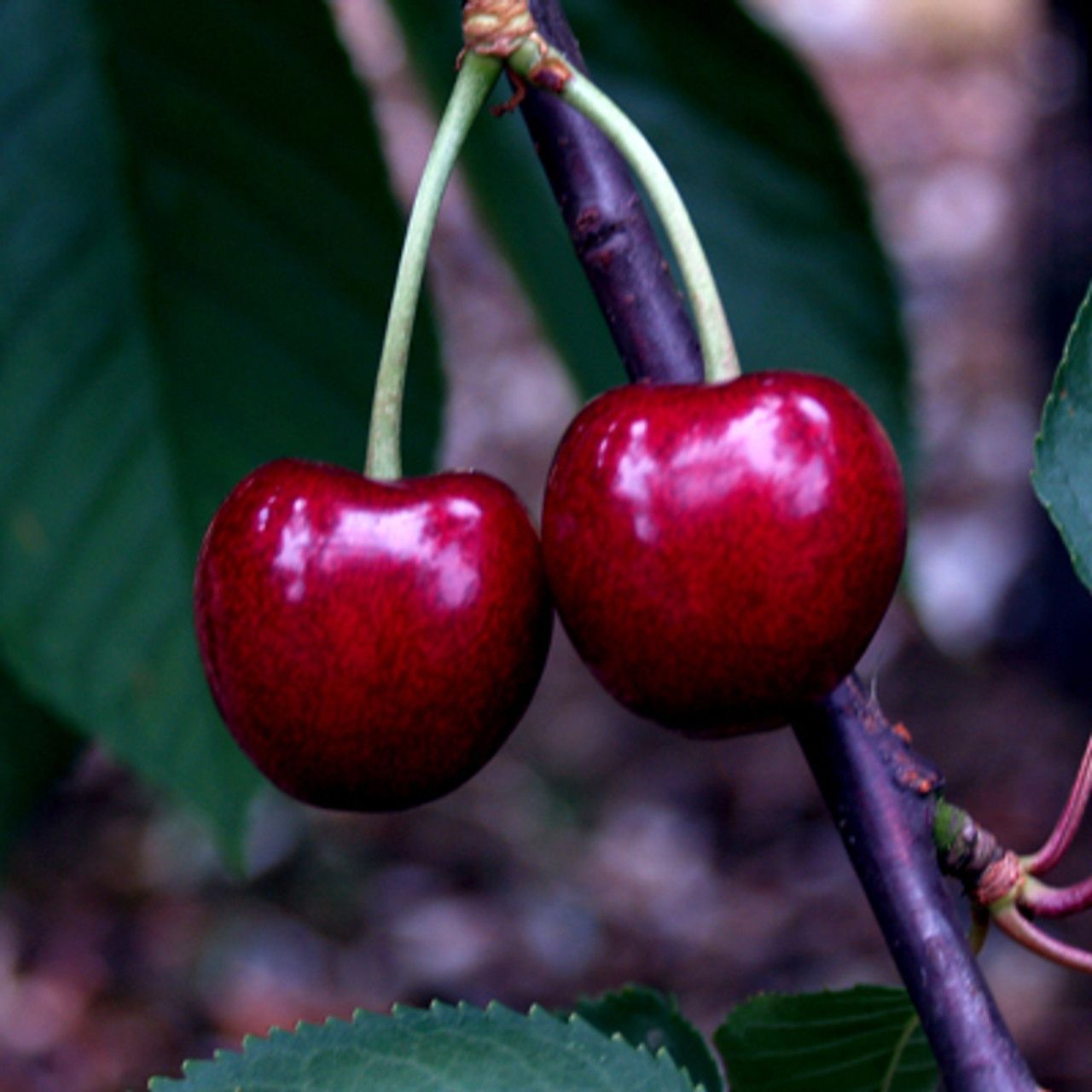
Cherry
Cherries are divided into a number of groups - the commonest of them being the sweet or dessert cherry (Prunus avium), and the sour or acid (Prunus cerasus) types. Sweet cherries produce delicious fruit and are usually grown as small open trees, or trained as fans against walls or fences. They can be grown in large containers, and if you choose a self-fertile cultivar, they will fruit without a pollination partner. By contrast, all acid cherries are self-fertile, tolerate some shade, and are ideal for growing against a north-facing wall. Their fruit are excellent for cooking and make delicious jam. Mazzard cherries are historically important being the historical basis for cultivated sweet cherries, and retaining characteristics of vigour, disease resistance, and prolific fruiting.
There are very few records concerning cherry trees (possibly due to the rather fragile nature and perish-ability of the fruit), but there are suggestions based on the writings of Pliny, that they originated in Asia Minor near the Black and Caspian Seas, and were in cultivation there around 800BC. However, archaeological finds of seeds from prehistoric Europe contradict this view, and it now seems that wild cherries have been an item of human food for several thousands of years. The stones have been found in deposits at Bronze Age settlements throughout Britain and Europe.
Top fruit trees are all supplied as bare root plants during the winter months (November - March).
For help with choosing the correct rootstock for your needs, please click here A Guide to Rootstocks

